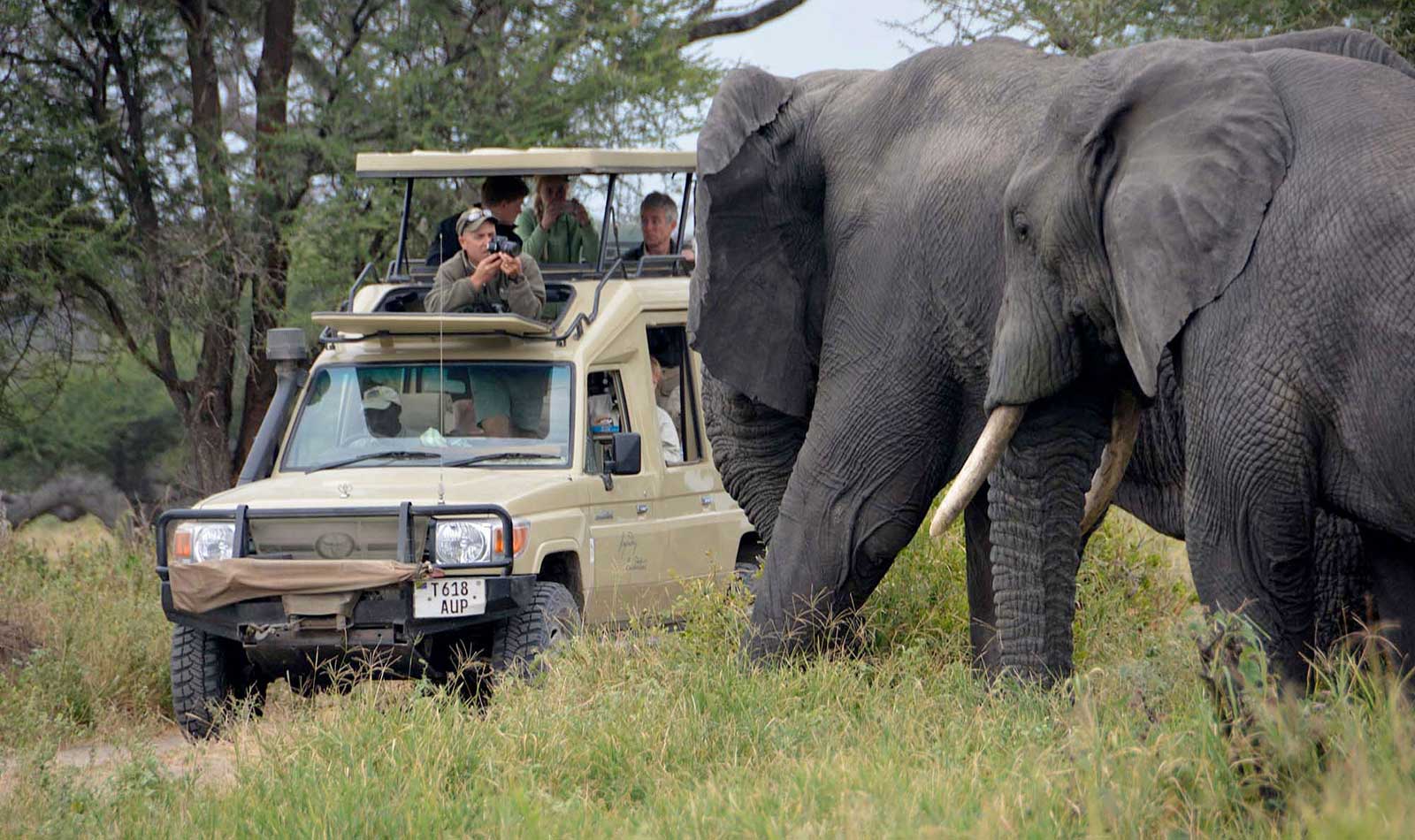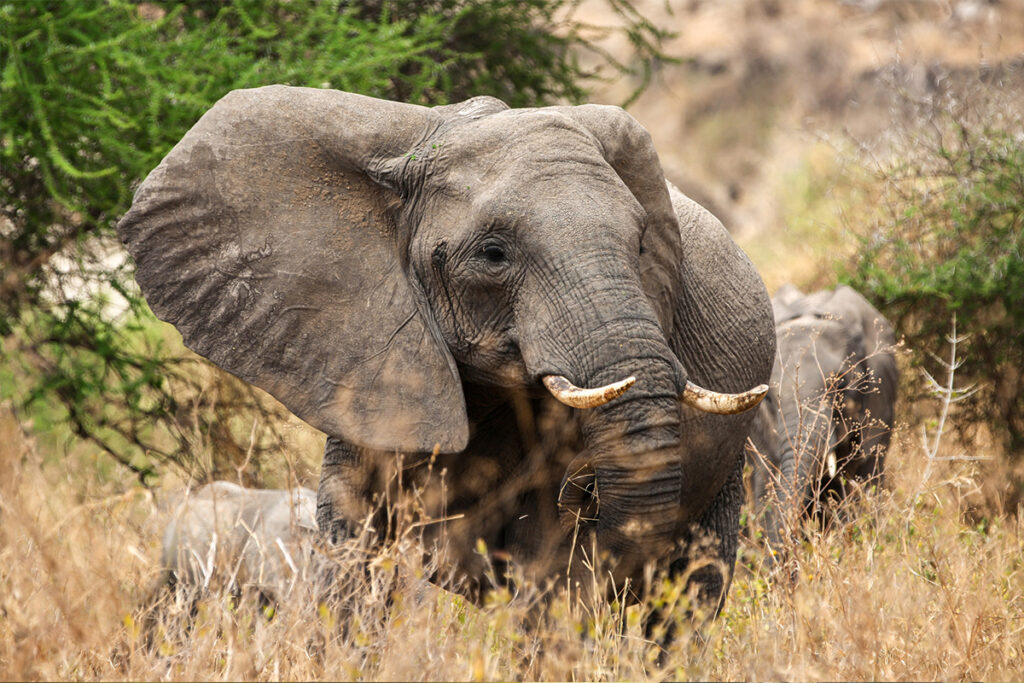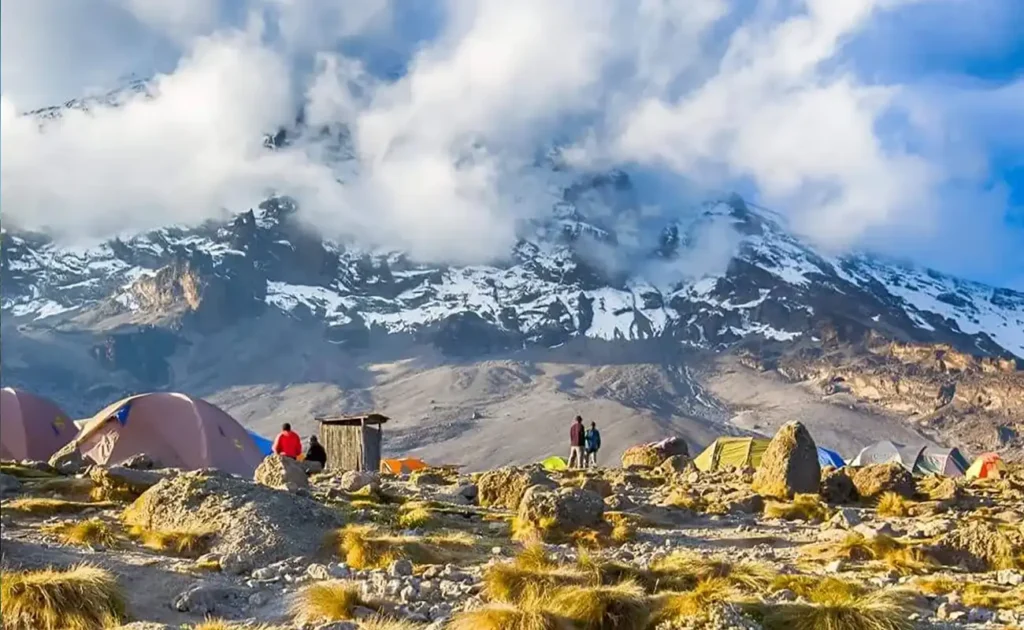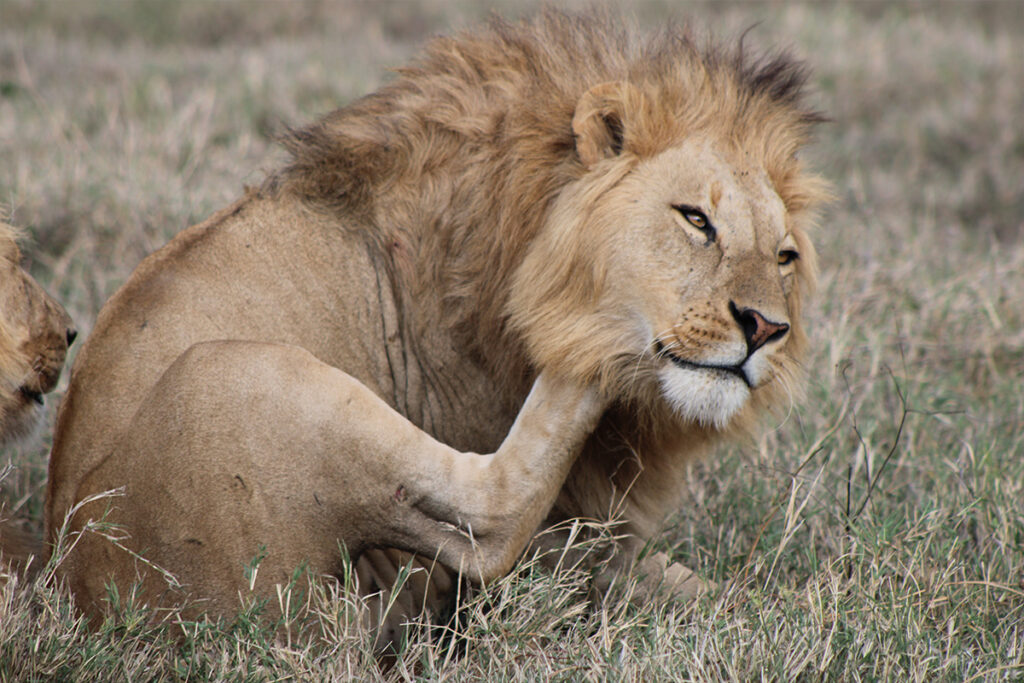With over 550 bird species calling it home, Tarangire National Park is a paradise for avian enthusiasts. Balancing the breathtaking views is the park’s impressive elephant population, one of the largest in Tanzania. Having witnessed these majestic creatures in their natural habitat, I can attest to the park’s incredible allure.
The park’s history dates back to its establishment in 1970, becoming a protected area for diverse wildlife to thrive. Spanning approximately 2,850 square kilometers, it offers a unique, immersive experience into Africa’s wild beauty. Notably, Tarangire’s seasonal river draws in a wondrous variety of animals, making every visit a distinct and unforgettable venture.

Why Visit Tarangire National Park?
Tarangire National Park offers an unparalleled wildlife experience, with its vast landscape filled with diverse species. From spotting large elephant herds to witnessing lions in their natural habitat, it’s truly breathtaking. Bird watchers will be delighted by over 550 species. The park’s unique baobab trees add to its stunning scenery. These trees, often called the “upside-down trees,” are a marvelous sight.
The park’s characteristics change with the seasons, making every visit distinct. In the dry season, animals gather around the Tarangire River, providing excellent viewing opportunities. During the wet season, the landscape transforms into a lush green haven. This seasonal variation keeps the experience fresh and exciting. It’s always a new adventure waiting to be discovered.
For those interested in history and culture, the park offers a deep connection to the Maasai people. Visitors can engage with the Maasai communities and learn about their way of life. This enriching experience adds another layer to the visit. It’s not just about the wildlife but also the rich human history. Understanding the Maasai culture enhances the overall journey.
A range of activities ensures there’s something for everyone. Whether it’s a guided safari tour, a walking expedition, or a night game drive, the options are plentiful. Visitors can enjoy the landscape’s beauty and maintain a thrilling sense of adventure. Additionally, lodges and campsites provide comfortable accommodations. This allows for extended stays to fully embrace everything Tarangire has to offer.
Exploring the Unique Biodiversity of Tarangire
Tarangire National Park is famous for its rich wildlife population and unique landscapes. One of its standout features is the large concentration of elephants. It’s common to see herds of these gentle giants roaming freely. The park is also home to several other big mammals, such as lions, leopards, and cheetahs. These predators thrive in this diverse ecosystem.
The park’s biodiversity extends beyond mammals to a wide variety of bird species. Enthusiasts can spot rare birds like the yellow-collared lovebird and the ashy starling. The wetlands and woodlands provide perfect habitats for different bird species. This makes Tarangire a birdwatcher’s paradise. You can often see the colorful birds perched on the branches of majestic baobab trees.
Additionally, reptiles such as pythons and monitor lizards add to the park’s extensive fauna. The rivers and waterholes are filled with crocodiles and hippos, creating a captivating aquatic display. Seasonal migratory patterns also bring in various types of animals. This ensures that each season brings a new array of species to observe. Nature’s tapestry is ever-changing in Tarangire.
Plant life in Tarangire is equally diverse, with iconic baobab and acacia trees dotting the landscape. The baobabs stand tall and old, resembling ancient guardians of the park. They provide not only beauty but also crucial habitats for many species. Beyond these famous trees, the park hosts numerous plant species that sustain its wildlife. The flora adds a unique charm to the park’s ecosystem.
Wildlife and Natural Attractions in Tarangire National Park
Tarangire National Park is a haven for diverse wildlife, making it a prime destination for nature lovers. Elephants are a major attraction, with large herds often seen near the Tarangire River. The park provides sanctuary to zebras, wildebeests, and buffaloes. These herbivores thrive in the park’s expansive grasslands. Their presence attracts predators like lions and leopards, creating a dynamic ecosystem.
Birdlife is equally spectacular in Tarangire, with the park playing host to hundreds of bird species. Bird watchers can spot the Kori bustard, the largest flying bird native to Africa. There are also smaller species like lovebirds and hornbills. The variety of birds adds colorful vibrancy to the park’s scenery. These feathered residents are often seen flitting among the baobab and acacia trees.
Natural attractions like the Silale Swamp are crucial to the park’s ecosystem. This swamp is a year-round water source, providing hydration during the dry season. It’s also a magnet for wildlife, drawing in animals from miles away. The swamp supports a rich array of both flora and fauna. Visitors can expect to see many animals gathered around this life-sustaining feature.
The landscape of Tarangire is dotted with iconic baobab and acacia trees, contributing to its unique beauty. The baobabs, in particular, stand out with their extensive, thick trunks. They are often dubbed “Tree of Life” due to their resilience. The trees also serve as shelters for various bird species. Their presence amplifies the park’s enchanted atmosphere.
Best Time to Visit Tarangire National Park
The best time to visit Tarangire National Park is during the dry season, from June to October. During these months, the Tarangire River becomes a vital water source. Animals gather here, making it easier to spot them. Visitors can enjoy clear views and comfortable weather. This period is particularly good for witnessing large elephant herds.
Another great time to visit is the short dry season from January to March. The park is less crowded during these months. Wildlife is still plentiful, and the weather remains pleasant. It’s also easier to find accommodation. This is an ideal time for those seeking a quieter experience.
The wet season, from November to December and March to May, has its own charm. The landscape turns lush and green, offering a different kind of beauty. Bird watchers will love this season as migratory birds arrive. Although animal sightings might be fewer, the scenery is breathtaking. However, some roads might be difficult to navigate due to the rain.
If you’re interested in avoiding the peak tourist times, plan your visit for the shoulder seasons. These are the periods just before and after the most popular months. You will still enjoy excellent wildlife viewing and pleasant weather. Plus, you can experience the park without the large crowds. This makes for a more relaxed and intimate adventure.
Consider your interests and priorities when choosing the best time to visit. Whether it’s the dry season’s wildlife concentration, the wet season’s scenic beauty, or the quieter shoulder months, Tarangire has something to offer year-round. Tailor your trip to what you most want to experience in the park. This way, you will make the most of your visit.
Activities and Safari Tours Available in Tarangire
Tarangire National Park offers a variety of activities and safari tours to suit different interests. One of the most popular options is a guided game drive. These drives provide an opportunity to see the park’s diverse wildlife up close. Experienced guides share their knowledge about the animals and the park’s ecosystem. Game drives usually take place in the early morning or late afternoon when animals are most active.
For a more intimate experience, consider a walking safari. Led by professional guides, these walks allow visitors to explore the park on foot. You can learn about the smaller details of the ecosystem that you might miss in a vehicle. This includes tracking animal footprints and observing unique plant life. Walking safaris offer a thrilling sense of adventure and a deeper connection to nature.
Night game drives are another exciting option available in Tarangire. These drives provide a chance to see nocturnal animals that are rarely spotted during the day. With the help of a spotlight, guides point out creatures like bush babies, leopards, and porcupines. The experience is uniquely thrilling and offers a different perspective on the park’s wildlife. Night drives are a must for those seeking a bit of adventure.
Bird watching tours are a hit among bird enthusiasts visiting the park. These tours focus on the rich birdlife in Tarangire. Guides help identify various species, making the experience educational and enjoyable. Some notable birds to look out for include the Kori bustard and the yellow-collared lovebird. These tours are both relaxing and fulfilling for bird lovers.
Cultural tours with the Maasai people are another activity worth considering. Visitors get to interact with Maasai communities and learn about their traditions and lifestyle. These tours often include visits to local villages and markets. You can experience traditional dances and crafts firsthand. It’s a culturally enriching addition to the wildlife-focused activities.




